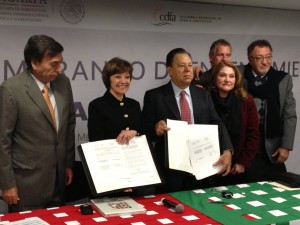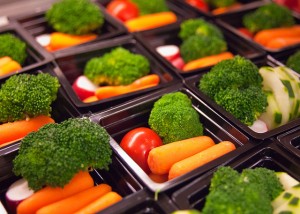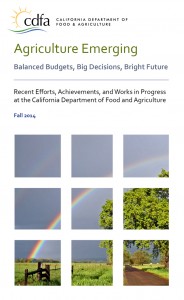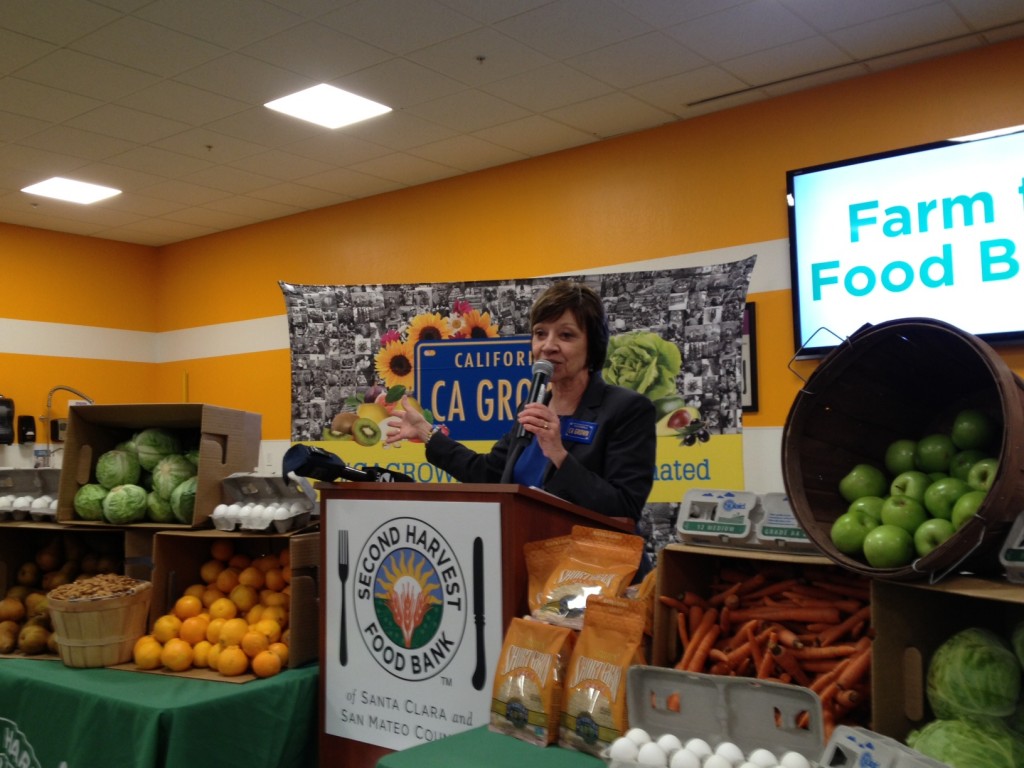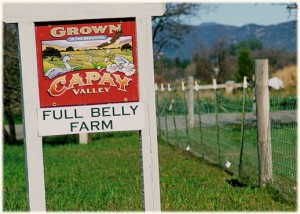By Sarah Parvini
Before they picked out an eight-foot Christmas tree, Tara White and Ed Dilks wondered whether an artificial tree might be a more eco-friendly choice.
But after doing some research, the Glendale couple decided that the convenience of an artificial tree didn’t stack up against the fresh scent and homey feel of a real tree.
“I felt guilty at first,” White said, studying the towering noble fir for gaps. “But it’s not like they go into the great forest and kill the trees. It’s not deforestation.”
The question of which tree is more environmentally friendly — real or artificial? — is resurrected each Christmas season.
But the discussion has gained urgency as California limps through a third year of drought. The debate now hinges on whether plastic trees give the environment a break because they don’t soak up a scarce resource, water.
U.S. customers bought about 33 million real trees last year compared with 14.7 million artificial trees, according to the National Christmas Tree Assn., which represents tree farmers. The artificial tree industry cites different figures: About 25 million real trees were sold in 2013 compared with nearly 11 million artificial trees, the American Christmas Tree Assn. said.
The two groups disagree on plenty of other things.
Natural trees don’t consume enough water to justify buying an artificial tree, said Rick Dungey, spokesman for the National Christmas Tree Assn. And many of the real trees sold in California come from Washington or Oregon, which are drought free, he added.
Artificial trees “are a giant green toilet bowl brush,” Dungey said. “A real Christmas tree starts as a seed. It comes from nature. Fake ones end in a landfill, and they won’t decompose like a plant will.”
Advocates of natural trees note that many fake trees are made with polyvinyl chloride, or PVC, a petroleum-based plastic. PVC is made with vinyl chloride, which can cause cancer and other ailments if exposure in high concentrations occurs, Environmental Protection Agency research shows.
Nearly 80% of artificial Christmas trees are made in China, where most electricity is coal-generated, according to the U.S. Department of Commerce. Using PVC, coupled with the energy consumed and pollution created transporting the artificial trees from overseas, places a far heavier burden on the environment, Dungey said.
Artificial-tree advocates point to the convenience of a decoration that doesn’t inflame plant allergies, drop needles or require a stand full of water.
“The drought is really serious, especially in California,” said Jami Warner, executive director of the American Christmas Tree Assn. “And it does take many thousands of gallons of water to raise a Christmas tree.”
Buyers keep their trees about 10 years on average, she said, meaning nine fewer trees in a landfill for the average household.
“The better-quality tree you buy, the longer you can keep it. They fold up, they come with nice bags, and you can put them in the closet,” Warner said.
As for the environmental effects of the Christmas tree choice, whether real or fake, the difference is negligible, according to a study commissioned by the American Christmas Tree Assn. in 2011.
Many products Californians use every day also make the same overseas trip on the same ships that artificial trees do, Warner said.
In addition, the PVC used in trees is high quality and safe, the group says. A separate study was less favorable to the fakes. It found that consumers would have to use their artificial trees for about 20 years before the negative environmental effects drop to natural tree levels.
The independent study, conducted in 2009 by Canadian sustainable development consulting firm Ellipsos, also cited the use of PVC as problematic.
On the negative side of the environmental ledger for natural trees: Some tree farms use pesticides and herbicides to fend off damaging insects and weeds, said Char Miller, director of the Environmental Analysis program at Pomona College. Nevertheless, a natural tree, especially those grown close to where a buyer lives, is best for the environment, even amid a drought, he said.
“The petroleum that goes into producing fake trees and transporting them is on a carbon scale much worse than a locally sourced tree,” Miller said. “Just as we are interested in locally sourced food, here is another item that it is best to buy much closer to home.”
Still, consumer demand has spawned hundreds of varieties of artificial Christmas trees, from traditional pine look-alikes to ombre trees that fade from black to gold. For those who might miss the scent of pine throughout their homes, there are fragrant ornaments that give artificial trees the fresh smell of the forest.
Katrina Sullivan’s holiday ornaments are hanging on a “Frosty Flocked” tree from the quirky collection of online retailer Treetopia, based in South San Francisco, where shoppers can score a pre-lighted pink tree or even an upside-down evergreen.
Sullivan, a design blogger, said she finds the annual purchase of a real tree to be one more holiday expense, although natural trees tend to be cheaper than artificial ones on a one-time basis. In addition, she prefers the ease of putting together and taking apart an artificial tree without the stress of pine needles falling all over the floor.
“Artificial trees have come a long way and look amazingly real,” Sullivan said. “I love that.”
But for Ashley James, an artificial tree just doesn’t feel like Christmas. James and her husband, Elton, were shopping on a recent Monday for a natural tree at Mr. Snowman Christmas Trees in Glendale.
It’s their 5-month-old daughter Lily’s first Christmas; they had to give her the authentic holiday experience, she said.
“My family always had a real tree,” James said. “We talked about getting a fake one, but I like the smell of a real tree. I like that it’s natural.”




